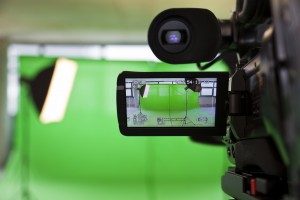
YouTube is the second largest search engine in the world and presents a powerful, personable way to connect with your audience. With 50% of visitors using it to watch business related videos and 75% of users visiting the marketers’ website after viewing a video, it is the prime platform to share valuable content related to your brand. So how does one harness the power of this search engine? By creating a video library!
Here are 5 questions to consider before embarking on this expensive and time consuming venture.
1. What do I want to accomplish?
Articulate what you want to achieve through the video library. Do you have upcoming campaigns that would benefit from video assets? Are you trying to flush out content gaps on your website? Are you releasing a new product that would benefit from a video tutorial? Asking these questions first will help you create a framework for the process and better help you achieve your business objectives.
2. Who am I trying to reach?
Did you know that 90% of marketing respondents use video content and prefer it to whitepapers, case studies, free trials and eBooks? Consider your audience and what needs or pain points you are trying to address. Identify and segment your audience for the overall library and for each video to help craft and deliver your message. Define the primary objective, key messaging, and success metrics for each video. At this time it is also helpful to consider style: for example, will it be more effective for your audience to hear a scripted message or a conversational interview? If you are unsure of what style to consider, take a look at how your competitors or similar organizations have approached the issue. Look for what speaks to you, and be sure of what you want before starting any shooting.
3. What do I want to say?
Identify a theme that relates back to your overall project goals. In a robust library each video offers unique insights and perspective to address a variety of audience needs. For example, a college creating videos for prospective freshman might include testimonials from current students, interviews with faculty, and highlight campus wide events to showcase their engaging and unique freshman experience.
4. How can I be efficient?
Creating a video library is an expensive and involved process. Identifying and consolidating efficiencies across videos, setting clear expectations, and being prepared for the unexpected will help limit cost.
- Set expectations: Be mindful and up-front about what your budget constraints are for both shooting and editing the library. Allocate your resources toward what is most valuable and relevant for your goals. For example, if music is not the most important but is still a consideration there are plenty of websites that give lots of options at a cheap cost. When defining expectations for the editing process consider how many stakeholders will be involved, the number of reviews that will be acceptable, and set limits accordingly.
- Create a formula: Set parameters for style, tone and music across a group of videos to cut down on post processing decisions and edits.
- Build a shot plan: Identify all the shots you need and consider shots you may already have (from a previous campaign or library). Is there anything you can re-use? For example, if video 1 and 5 need B-Roll shots of people walking then you only need to capture that scene once. Some detailed questions to ask include: Do the shots need to be indoor or outdoor? What does the set- up involve? What does the weather need to be like? Do we need to include people? Cars?
- Prepare: On the day of a shoot prepare by mapping out locations, checking for weather changes, anticipating and allowing extra time for last minute challenges. If your video has a lot of moving parts, give yourself enough time to get the material that you need. For example, you may only need 10 seconds of people walking down the street but it may take 30 minutes to get a good shot. If you are interviewing people build in extra time make sure you stay on schedule. Request interviewees to come 15 minutes early so they can get oriented, and prepped. Allow time for nervousness, rambling, and finding that perfect sound bite. Be mindful of who you are working with and adjust expectations accordingly.
- Edit with discipline: The most popular videos on YouTube are less than 2 minutes in length, so be aware of the most critical information to include. If you are forced to decide between adding length or cutting content, you should probably cut content.
5. How should I share my library?
The answer to this question varies on what type of content you are sharing and what you hope to accomplish. If you want to share valuable product information like specifications, tips and tricks, and how-to tutorials then it would be beneficial to create a library where all of your audience segments can find the information most useful to them. However, if you are planning on using your videos in a campaign, you may want to plan a slower and more calculated release so your audience feels like they are getting a first glance at new content.
Video content provides a powerful way to connect with and pass on valuable information to your audience on a platform that most emphasizes a person-to-person connection. While creative a video library can be an involved process, being prepared and asking the right questions can help you minimize stress, delays, and help you create more impactful content.
To learn more about the importance of visual social content click here.



Sorry, the comment form is closed at this time.